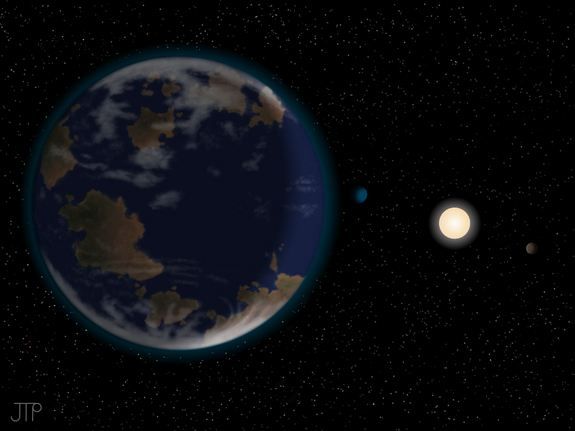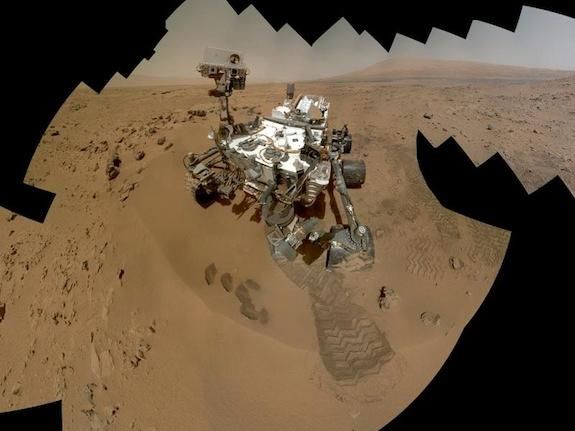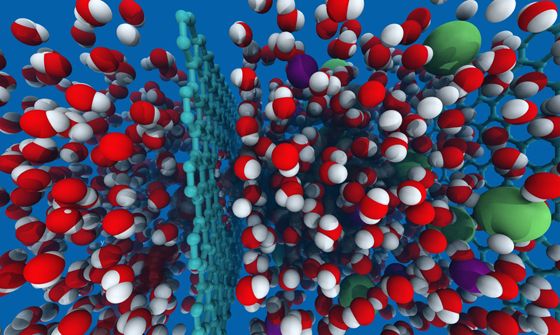Mythical Particles, Goldilocks Planets and More: Top 5 Surprising Scientific Milestones of 2012
From the Higgs Boson to the Curiosity rover, 2012 was a major year for science
/https://tf-cmsv2-smithsonianmag-media.s3.amazonaws.com/filer/SurprisingScience-Godilocks-Planets-631.jpg)
The year 2012 was a major one for science. We saw scientists develop a new type of drug to combat HIV, figure out how to store digital data in DNA—fitting an astonishing 700 terabytes of information into a single gram of it—and even invent a coating for the inside of condiment bottles that could eliminate our stuck-ketchup-headaches once and for all (though, admittedly, this one is a little less groundbreaking than the others). Yet a few milestones in particular—discoveries, technological feats, realizations, and inventions—stand out:
1. The Higgs Boson: The landmark discovery by the European Organisation for Nuclear Research (CERN) of the once-mythical particle might be the most significant scientific discovery of our lifetimes, but it’s also one of the most surprising. Stephen Hawking, the Einstein of our time, famously bet Michigan physicist Gordon Kane $100 that it would never be found.
In an interview with The Atlantic, physicist Lawrence Krauss explained why so many experts had agreed with Hawking, arguing that the existence of the Higgs—a particle (and associated field) that makes certain types of elementary particles behave as though they had mass—was just too convenient, as it was originally posited simply to explain away an apparent difficulty in an otherwise appealing theory in theoretical physics.
The theory seeks to unite all physical forces under the same set of rules. But how can electromagnetic forces–governed by massless photons–fit under the same theoretical umbrella as the weak force, which is governed by bosons with discernible mass that control radioactive decay? Efforts to answer this conundrum gave birth to the Higgs boson. Krauss noted,”It seemed too easy…It seemed to me that introducing an invisible field to explain stuff is more like religion than science…Great, I invented invisible hobgoblins to make things right.”
Incredibly, in this case, it turned out the hobgoblins were real.

2. Earth-Like Planets: 2012 featured a ton of exoplanet discoveries, but the sighting of HD 40307g was without a doubt the most unexpected and exciting. The planet, bigger than earth but not so large as to be a gas giant, seems to orbit in its sun’s “goldilocks zone” (not too hot and not too cold), making it potentially capable of hosting liquid water, considered a prerequisite for life as we know it.
Even better, it’s just 42 light-years away: distant by human standards, but fairly close by compared many of the astronomical objects, making future projects to observe the planet much more feasible.

3. Curiosity Reaches Mars: Okay, the mission itself wasn’t too surprising—it’s been in the works since 2004—but what was so astonishing was the sudden surge of public interest in the rover and in space exploration as a whole. For decades following the manned Apollo missions of the 1960s and 70s, general enthusiasm for space science had slowly ebbed. After Curiosity’s successful landing, though, it surged. Among other things, video of NASA engineers celebrating the feat went viral and the official Curiosity twitter account garnered some 1.2 million followers.
People are so interested in Curiosity‘s exploits, in fact, that even an engineer’s throwaway line about “a discovery for the history books” pumped up expectations so much that we were bound to be disappointed by the actual finding: that early Martian soil samples seem to be representative of what we know of the planet as a whole, and that its chemistry is complex enough to have potentially once supported life. Bigger news might come over the next few years, but as project scientist John Grotzinger said, “Curiosity’s middle name is patience.”

4. Climate Change Is Even Worse Than We Thought: After decades of warnings from scientists that our greenhouse gas emissions will soon wreak havoc with the climate, we’re now starting to see the consequences—and they sure aren’t pretty. As a whole, experts are saying that the even the most frightening climate scenarios have proved to be too conservative in their analysis of how rising carbon dioxide concentrations will alter precipitation patterns, drive ocean acidification, lead to more powerful storms and, in general, make most parts of the planet grow warmer.
One silver lining might be that the public is now starting to acknowledge climate change as a present-day problem, rather than a hypothetical trend that could take effect in the future. Sadly, this has come only after record-breaking heat waves, droughts and the tragic impacts of Hurricane Sandy. Although the most recent international climate talks in Doha accomplished little, there are hopes that this shift in opinion could lead to a long-awaited change in policy sometime soon.

5. A New Way to Desalinate Seawater: With world populations expected to keep growing and potable water projected to grow more scarce over the coming century, a practical and cheap means of desalinating sea water is one of materials science’s holy grails. In July, MIT researchers announced the development of a new method of desalinization using one-atom-thick sheets of graphene, a pure carbon substance. Their method could be far cheaper and less energy-intensive than existing systems—potentially providing a way to solve many of the world’s water problems once and for all.
/https://tf-cmsv2-smithsonianmag-media.s3.amazonaws.com/accounts/headshot/joseph-stromberg-240.jpg)
/https://tf-cmsv2-smithsonianmag-media.s3.amazonaws.com/accounts/headshot/joseph-stromberg-240.jpg)